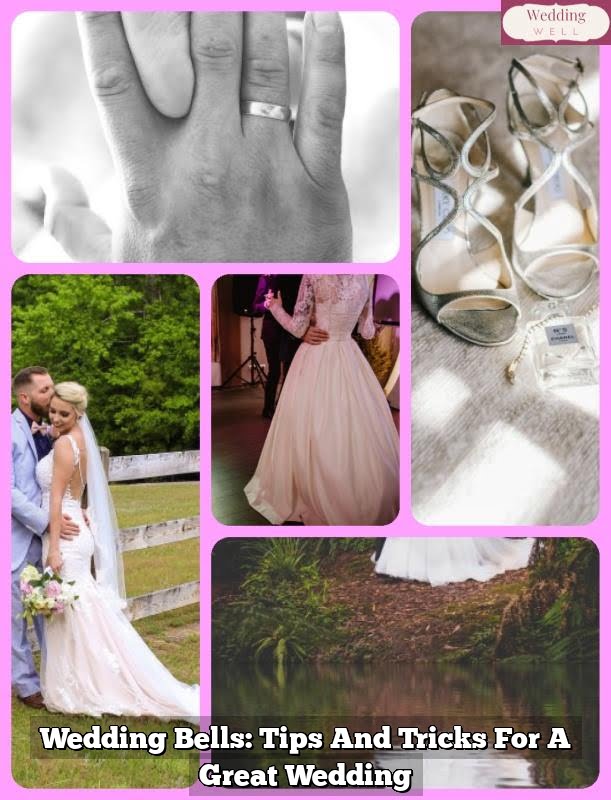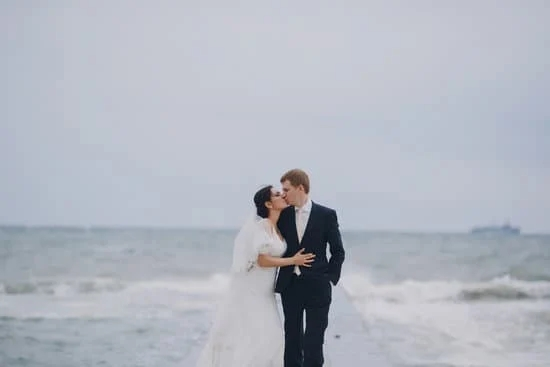What is a Red Wedding? The very mention of this phrase might evoke images of bloodshed and betrayal for many, thanks to its infamous portrayal in popular culture. However, the concept of a Red Wedding extends far beyond its fictional representation in literature and television. In this article, we delve into the historical origins, cultural significance, symbolism, and controversies surrounding the idea of a Red Wedding.
The tradition of a Red Wedding has deep historical roots, with various cultures and societies adopting their own interpretations of this ceremonial practice. From ancient rituals to modern-day wedding ceremonies, the concept of a Red Wedding has evolved over time, holding different meanings for different people.
Exploring the symbolism of the color red in wedding ceremonies is essential to understanding the significance of a Red Wedding. The vibrant hue represents love, passion, and prosperity in many cultures. Its incorporation into wedding traditions highlights the celebration of these virtues and sets the tone for a joyous occasion. Join us as we unravel the rich tapestry of customs and beliefs associated with the concept of a Red Wedding.
Historical Origins of the Red Wedding Tradition
The historical origins of the Red Wedding tradition can be traced back to ancient cultures and civilizations, where the color red held significant symbolism and meaning. In many cultures, the color red was associated with love, passion, and fertility, making it a popular choice for wedding ceremonies. The use of red in weddings was believed to ward off evil spirits and bring good fortune to the couple.
Ancient China
In ancient China, a traditional wedding ceremony often involved the bride wearing a red wedding gown, known as a qipao or cheongsam. The color red was considered auspicious and was believed to bring happiness and prosperity to the newlyweds. Red decorations and symbols were also prominently featured in Chinese wedding rituals to symbolize joy and good luck.
India
In Indian culture, the color red holds great significance in weddings. Brides often wear elaborate red sarees or lehengas, while grooms may wear red turbans or accessories. The use of sindoor, a red powder applied on the bride’s forehead, is also an important part of Hindu wedding traditions, symbolizing her married status.
Europe
In medieval Europe, the color red was associated with royalty and nobility. Royal weddings often featured lavish displays of rich red fabrics, flowers, and decorations as a sign of wealth and power. Over time, the symbolism of the color red evolved to incorporate themes of romance and passion in Western wedding traditions.
Understanding the historical origins of the Red Wedding tradition provides insight into its cultural significance in different societies around the world and how it has remained a timeless symbol of love and celebration.
Cultural Significance of a Red Wedding in Different Societies
Red weddings hold significant cultural importance in various societies around the world. In many cultures, the color red is associated with luck, prosperity, and happiness, making it a popular choice for wedding ceremonies. The concept of a red wedding varies from one culture to another, with each society incorporating its unique traditions and customs into the celebration.
In Chinese culture, for example, red is considered a symbol of good fortune and joy. As a result, brides often wear traditional red wedding dresses, and the wedding decorations, including the invitations, flowers, and even the venue itself, are adorned with this auspicious color.
In Indian culture as well, red holds deep cultural significance and is a traditional color for bridal attire. The bride’s hands and feet may also be adorned with intricate henna designs in shades of red as part of pre-wedding rituals.
Similarly, in some Middle Eastern countries, red is an important color in wedding ceremonies. Brides may opt for stunning crimson or scarlet gowns embellished with gold embroidery or beading, while red roses are commonly used in floral arrangements.
The tradition of incorporating the color red into wedding celebrations extends beyond Asia and the Middle East; in Greece and other Mediterranean countries, for instance, red ribbons are tied around the couple’s wrists as a symbol of love and unity during the marriage ceremony.
It is evident that the significance of a red wedding varies across different cultures but shares common threads of luck, happiness and prosperity associated with the vibrant hue. Understanding these cultural differences can help couples appreciate and respect the diverse customs related to a red wedding ceremony worldwide.
The Symbolism of the Color Red in Wedding Ceremonies
The color red has been deeply symbolic in wedding ceremonies across various cultures and traditions. It represents love, passion, and fertility, making it a popular choice for wedding attire, decorations, and themes. In many Asian cultures, particularly in China and India, red is considered the color of good fortune and prosperity, making it an auspicious choice for weddings. In Western cultures, red symbolizes romance and desire, adding a bold and passionate element to the wedding celebration.
The symbolism of the color red in wedding ceremonies can be seen in various aspects of the event. From the bride’s stunning red wedding gown to the vibrant red floral arrangements adorning the venue, this color is used to evoke strong emotions and create a visually striking atmosphere. The use of red in wedding rituals such as exchanging red roses or sipping from a ruby-red wine chalice also adds depth and meaning to the ceremony.
In addition to its romantic connotations, the color red also signifies strength and power in many cultures. This carries significant symbolism for couples embarking on their marital journey, as they symbolize their union with a bold declaration of commitment and love. The rich cultural significance attached to the color red elevates its role in wedding ceremonies, making it a timeless and meaningful choice for couples looking to infuse their special day with tradition and symbolism.
- Historical origins of using red in weddings
- Cultural significance of using red as part of traditional wedding attire
- Symbolism of incorporating the color red into different elements of a wedding ceremony
Notable Examples of Red Weddings in Literature and Popular Culture
The concept of a Red Wedding has made its way into literature and popular culture, often carrying significant symbolism and impact on the storyline. Here are some notable examples of Red Weddings in different works:
1. Game of Thrones: Perhaps the most famous example of a Red Wedding is from the popular TV series Game of Thrones, based on the A Song of Ice and Fire novels by George R.R. Martin. The infamous “Red Wedding” episode shocked viewers with its brutal betrayal and massacre during a wedding celebration, leaving a lasting impact on the characters and audience alike.
2. Romeo and Juliet: In Shakespeare’s tragic play, Romeo and Juliet, the lovers’ secret wedding ceremony ultimately leads to a series of disastrous events that culminate in their untimely deaths. The red symbolism in this wedding extends beyond just the color itself, representing passion, love, and ultimately tragedy.
3. Jane Eyre: Charlotte Brontë’s classic novel features a pivotal wedding scene where Jane Eyre discovers her groom, Mr. Rochester, already has a living wife, leading to a dramatic interruption of the ceremony. While not labeled as a “Red Wedding,” this event symbolizes betrayal and deception, akin to the elements associated with the concept.
These examples demonstrate how the notion of a Red Wedding transcends cultures and time periods, showcasing its enduring impact on storytelling across various mediums.
The Traditions and Rituals Associated With a Red Wedding
In traditional Chinese weddings, the color red plays a prominent role as it is believed to bring good luck and happiness to the newlyweds. Red wedding attire, decorations, and even the envelopes containing monetary gifts are all characteristic of Chinese wedding customs.
Similarly, in Indian culture, brides often wear red saris or lehengas as a symbol of marital bliss and fertility. The use of henna with intricate red designs on the bride’s hands and feet is also a customary practice.
Furthermore, in some Middle Eastern countries, red henna is used not only for decoration but also as a symbolic gesture during pre-wedding rituals. The application of red henna on the bride’s hands is seen as a way to invoke blessings and protection on her journey into marriage. These cultural traditions demonstrate just how deeply ingrained the significance of the color red is in wedding rituals around the world.
Additionally, certain Western cultures also embrace elements of a Red Wedding in their ceremonies. From using red roses as floral arrangements to incorporating red-themed decor into the venue, couples are finding creative ways to infuse their weddings with this vibrant hue.
| Aspect | Example |
|---|---|
| Traditional Chinese Weddings | Red wedding attire, decorations, and envelopes containing monetary gifts |
| Indian Weddings | Brides wearing red saris or lehengas; application of henna with intricate red designs |
| Middle Eastern Weddings | Use of red henna for decoration and symbolism during pre-wedding rituals |
| Western Weddings | Incorporating red roses as floral arrangements; using red-themed decor at the venue |
Controversies and Criticisms Surrounding the Concept of a Red Wedding
In recent years, the concept of a Red Wedding has sparked controversy and criticism due to its association with violence and betrayal. Many people are familiar with the term “Red Wedding” from its portrayal in popular culture, particularly in the television series Game of Thrones. The infamous Red Wedding episode depicted a massacre during a wedding celebration, leaving a lasting impression on viewers and leading to widespread discussions about the meaning and origins of such a tradition.
The term “Red Wedding” traditionally refers to a ceremony where significant bloodshed occurs, either literally or metaphorically. The idea of combining a joyous occasion like a wedding with elements of violence or treachery has led to moral objections and concerns about glorifying such themes. Some critics argue that romanticizing the concept of a Red Wedding desensitizes people to acts of brutality and may perpetuate harmful stereotypes about weddings as sites of conflict rather than union.
Despite these criticisms, proponents of the Red Wedding concept argue that it serves as a powerful narrative device in storytelling and as an allegory for enduring themes such as power struggles, revenge, and betrayal. From a historical perspective, the notion of using weddings as settings for political intrigue or warfare has deep roots in various cultures around the world.
While some view the Red Wedding as distasteful or inappropriate, others see it as an opportunity to explore complex human emotions and moral dilemmas within the context of a ceremonial event.
Ultimately, whether one views the Red Wedding tradition as compelling symbolism or troubling glorification largely depends on individual perspectives and cultural sensitivities. As modern couples seek unique ways to personalize their wedding ceremonies, it remains to be seen how the concept will continue to evolve in contemporary society.
| Aspect | Data |
|---|---|
| Main Controversy | Association with violence and betrayal |
| Response from Critics | Moral objections and concerns about glorifying violent themes |
| Supporters’ Argument | Viewing it as powerful narrative device and allegory for enduring themes |
How Modern Couples Are Incorporating the Idea of a Red Wedding Into Their Ceremonies
For many modern couples, incorporating the idea of a Red Wedding into their ceremonies is an opportunity to infuse their special day with uniqueness and cultural significance. Whether they have ancestral ties to cultures where red symbolizes love, luck, and prosperity, or simply want to break away from traditional white wedding themes, the concept of a Red Wedding has become increasingly popular.
Using Red as the Dominant Color
One way that modern couples are embracing the idea of a Red Wedding is by making red the dominant color in their wedding theme. This can be achieved through the choice of attire for the bridal party, floral arrangements, and decorative elements such as table settings and drapery. The bold and vibrant nature of the color red adds an element of drama and passion to the overall aesthetic of the wedding.
Incorporating Cultural Elements
Couples who wish to honor their heritage or embrace cultural traditions often incorporate specific elements into their Red Wedding ceremony. This can include rituals, dances, or customs that are significant within their cultural background. These elements not only add depth and meaning to the wedding ceremony but also serve as a way for couples to celebrate their roots.
Personalizing Traditional Aspects
While some couples may opt for a completely non-traditional approach to their Red Wedding, others choose to personalize traditional wedding elements with touches of red. For example, red velvet cake or floral-infused cocktails can add a unique twist to familiar customs. Additionally, couples may choose to blend cultural and modern influences by incorporating both traditional white attire as well as red ceremonial garments.
The concept of a Red Wedding continues to evolve as modern couples find creative ways to incorporate this vibrant theme into their celebration of love and commitment. Whether steeped in tradition or infused with contemporary flair, these weddings are a testament to the diversity and creativity present in today’s matrimonial landscape.
Tips for Planning and Executing a Memorable Red Wedding Ceremony
In conclusion, the concept of a Red Wedding encompasses a rich tapestry of historical, cultural, and symbolic significance. From its origins in ancient traditions to its portrayal in popular culture, the idea of a Red Wedding has captured the imaginations of people around the world.
The color red holds deep symbolism in wedding ceremonies, representing love, passion, and good fortune. While controversies and criticisms may surround the concept of a Red Wedding, modern couples are finding creative ways to incorporate this tradition into their ceremonies.
As the trend of Red Weddings continues to gain popularity, it is important for couples to consider the cultural and historical significance of this tradition. Whether it involves incorporating traditional rituals or simply choosing red as the dominant color theme for the ceremony, understanding the roots of the Red Wedding can add depth and meaning to the celebration.
By honoring and respecting the origins of this tradition, couples can ensure that their Red Wedding is not only a beautiful event but also one that pays homage to its historical and cultural importance.
Ultimately, whether couples choose to embrace a fully traditional Red Wedding or simply infuse elements of red into their ceremonies, it is crucial that they do so with reverence and thoughtfulness. From selecting attire and décor to incorporating meaningful rituals and symbols, careful planning can result in a memorable and meaningful Red Wedding ceremony that reflects both the love between partners and the rich history behind this age-old tradition.
Frequently Asked Questions
What Does a Red Wedding Mean?
A “Red Wedding” generally refers to a massacre at a wedding ceremony, as depicted in the “Game of Thrones” series. It is characterized by betrayal, treachery, and brutal violence, typically resulting in a large number of deaths.
What Happens at the Red Wedding?
At the Red Wedding in “Game of Thrones,” several main characters are brutally murdered during a wedding celebration, orchestrated by the host as an act of revenge and political maneuvering. The event is marked by deceitful alliances and bloody slaughter.
What Is the Red Wedding Based On?
The Red Wedding is based on the real historical event known as the Black Dinner and the Massacre of Glencoe, where guests were slaughtered under false pretenses of hospitality. These events served as inspiration for George R.R.
Martin when he wrote the infamous Red Wedding scene in his “A Song of Ice and Fire” series, which was later adapted into the television show “Game of Thrones.”

Welcome to my blog about home and family. This blog is a place where I will share my thoughts, ideas, and experiences related to these important topics. I am a stay-at-home mom with two young children. I hope you enjoy reading it! and may find some helpful tips and ideas that will make your home and family life even better!





